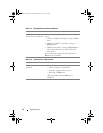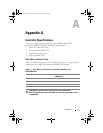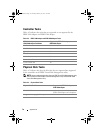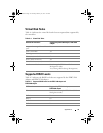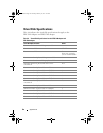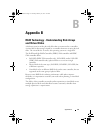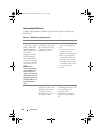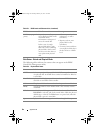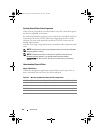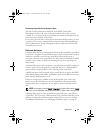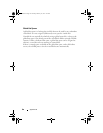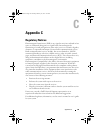
Appendix B
83
RAID 1 (mirroring) Mirrors data on one physical
disk to another, to provide
basic redundancy.
In the event of a single
physical disk failure a second
copy of the data exists, which
can be used to restore the
data to a new, replacement
physical disk.
Useful when only two physical
disks are available, and when
data integrity is more
important than storage
capacity.
RAID 10 (striped
mirror sets)
Combines mirrored and
striped sets; data are striped
across mirrored sets of
physical disks.
RAID 10 allows multiple
physical disk failures, up to
one failed physical disk in
each mirror that has been
striped.
In the event of a single
physical disk failure (per
mirror set) a second copy of
the data exists, which can be
used to restore the data to a
new, replacement physical
disk.
• Offers better performance
than a simple mirror
because of the additional
physical disks.
• Requires twice the disk
space of RAID 0 to offer
redundancy.
• When a physical disk in a
RAID 10 virtual disk fails,
the virtual disk is still
functional. Data is read
from the surviving mirrored
disk.
Table B-1. RAID Levels and Characteristics
(continued)
RAID Level Main Characteristics Advantages
A5_bk0.book Page 83 Thursday, February 10, 2011 8:34 PM




